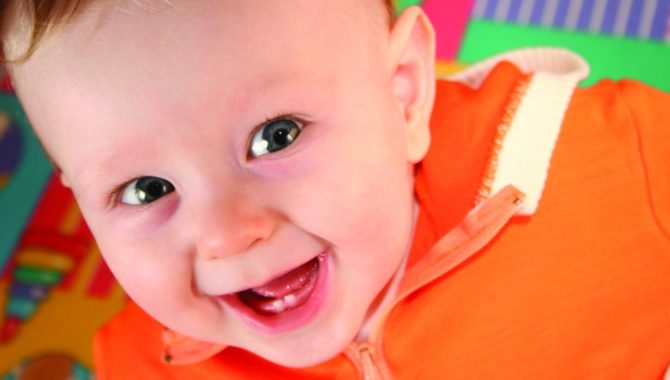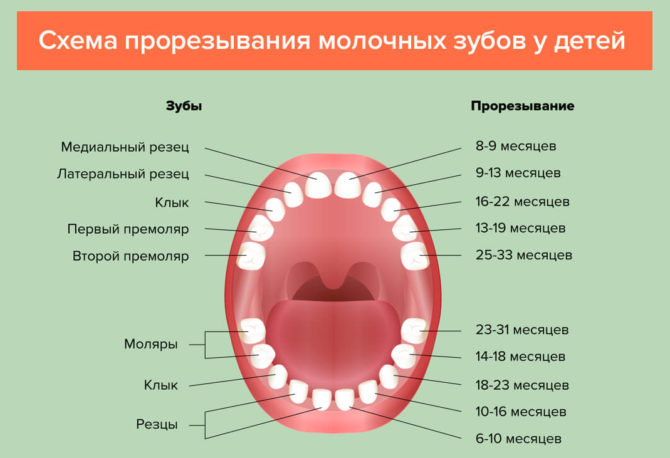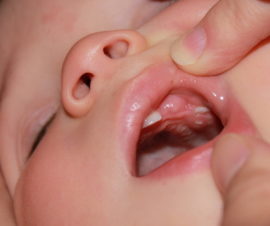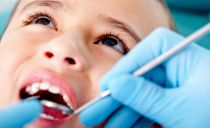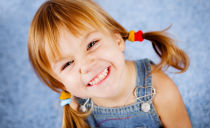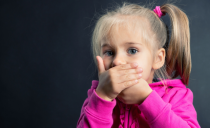How many teeth should a child have in 1 year and up to one year
The abnormal development of temporary teeth in a one-year-old baby can be a symptom and cause various diseases, therefore, parents should know how many teeth a child should have in 1 year, what is the sequence and specificity of their teething. If pronounced deviations from the average indicators are found, parents should consult a specialist.
Content
How many teeth should a child have up to a year and a year: teething chronology
Dental rudiments occur already in the second month of fetal development. The nature of their maturation in the perinatal period determines the specificity and timing of the appearance of dental units. The normal development of the masticatory apparatus implies the presence in a newborn child of the rudiments of 20 milk teeth and 16 molars. The teething of the first incisors is observed at six months of age. Up to a year, 6-8 teeth should come out of the baby, by the year and a half - 12, by the third year of life all 20 temporary teeth will come out.
The teething process is characterized by the simultaneous appearance of name-bearing dental units on the left and right sides of the jaw. Teeth are cut alternately and in a certain sequence, but they can come out with a violation of the order. Normally, the process of teething occurs in accordance with the table:
| Numbering of dental units | Name of tooth pair | Teething age (months) |
|---|---|---|
| 1 | Lower central incisors | 6–10 |
| 2 | Upper central incisors | 8–12 |
| 3 | Upper side incisors | 9–13 |
| 4 | Lower side incisors | 10–16 |
| 5 | Top first molars | 13–19 |
| 6 | Lower first molars | 14–18 |
| 7 | Lower and upper fangs | 16–23 |
| 8 | Lower and upper second molars | 23–33 |
Experts note that a slight deviation from the norm indicators indicated in the table and in the diagram is permissible. The early appearance of a milk bite (from 4 months) and later (from nine) is not a pathology. The reason to turn to a specialist is only a significant deviation from the indicators and the complete absence of signs of the formation of a dental apparatus at the age of one year old.
Factors affecting the teething process
It is impossible to reliably determine how many teeth a particular child should have at 9 months, a year and a half or another age period. The number of teeth and the nature of their teething depend on the characteristics of the prenatal and postnatal development of the baby. Factors affecting the nature of prenatal development include:
- Diseases of the mother. In children born to mothers with heart disease, caries or who have had an infection (herpes, toxoplasmosis), the masticatory apparatus erupts twice as slowly as a child born from a healthy mother.
- The course of pregnancy and childbirth. Rhesus factor incompatibility, prematurity, prolonged toxicosis in women and other complications during gestation are risk factors for impaired growth and formation of dental units.
- Nutrition of a pregnant woman. Children's teeth begin to form from the first trimester of intrauterine development. During this period, the expectant mother is recommended to use products containing a sufficient amount of calcium, fluorine and other elements necessary for the normal development of the dental apparatus.
- Infectious diseases of a newborn baby.
- Heredity.
The quantity and quality of teeth that appeared in a child in the 1st year of life are affected by the diet and diet, climate, diseases transferred by the baby. The norm of teeth at 1 year is relative, but the complete absence of signs of eruption at this age is an indicator of the abnormal development of a child’s bite.
The consequences of pathological tooth growth
Slow development of the dentition leads to incomplete grinding of food. Due to insufficient chewing, large unprocessed pieces of food enter the stomach, which provokes an upset digestive system and a deterioration in the general health of the body.
Late teething prevents the correct pronunciation of sounds. Ignoring this problem fixes speech defects and contributes to the development of dyslalia - impaired sound pronunciation.
Incorrect formation of a milk bite entails pathologies such as:
- Pronounced imbalance of the face.
- Deformation of a permanent bite and belated eruption of molars.
- Arthritis and arthrosis (due to changes in the structure of the temporomandibular joint).
- Impossibility of eruption of molars. This pathology occurs if the first teeth in a child come out before birth. Such early teeth have structural defects and must be removed, which leads to the covering of the molar with bone tissue and interferes with its eruption. The same anomaly can occur if the milk tooth fell out long before the eruption of the permanent.
A delay in the formation of the dental apparatus may be a sign of rickets, impaired functioning of the endocrine system and other diseases. It is possible to avoid complications and prevent the development of pathologies in case of timely identification of the causes of late teething, therefore, parents are advised to pay attention to how many teeth appeared in the child before 11 months, and if necessary, consult dentistry.
An almost one-year-old child should have signs of teething, otherwise the baby may be prescribed vitamin complexes and medical procedures, including the installation of removable dentures.
Signs of teething
The appearance of the first teeth is indicated by swelling of the gums and increased salivation (salivation). Hypersalivation occurs due to increased blood supply to the oral cavity and is accompanied by a runny nose. In some cases, increased salivation provokes a cough, so infrequent coughing of a child during the period when his first tooth is climbing is normal. The resulting temperature is also not a deviation during teething, but only if it lasts no more than three days.
In most cases, the behavior of the child changes before the appearance of the teeth. The baby falls asleep heavily and often wakes up, sucks cams and seeks to gnaw foreign objects, refuses food. The child’s tearfulness rises, his mood is constantly changing.
How to help the baby
Any baby whose teeth come out needs increased parental attention, so adults are recommended:
- talk with your child only in calm and gentle tones;
- more often carry the baby in her arms;
- distract from toothaches through play.
Many children are breastfed up to a year old, and doctors advise not to wean the baby from the breast at this age, as applying to the breast helps calm the baby and helps him more easily survive the teething process.
You can reduce pain during the appearance of milk incisors with the help of medications, but they should be used with caution and in case of emergency. Symptoms of great concern (temperature above 38.5 ° C, runny nose, making breathing difficult) are recommended to be eliminated exclusively under the supervision of a pediatrician.
Baby Oral Care
The need to care for the oral cavity appears from the moment when the first dental units got out of the child. Sufficient attention to oral hygiene will help prevent the development of many dental pathologies.
Prevention of dental diseases includes:
- Daily brushing. Until the age of one, experts recommend using a silicone toothbrush to clean the entire oral cavity. Parents should clean the teeth of a child under 4 years old, and children from four to eight years old should perform the procedure on their own under the supervision of adults.
- Rinse your mouth after eating.
- Compliance with diet. The baby's diet should include foods containing calcium, fluoride and other trace elements. Up to a year and a half, it is undesirable for a child to use chocolate or confectionery sweets, and snacks between meals are also undesirable.
Regardless of how many teeth the baby got out by the age of 8, 9 or 12 months, at the age of one year, you need to take him to the oral cavity for examination by the dentist.

